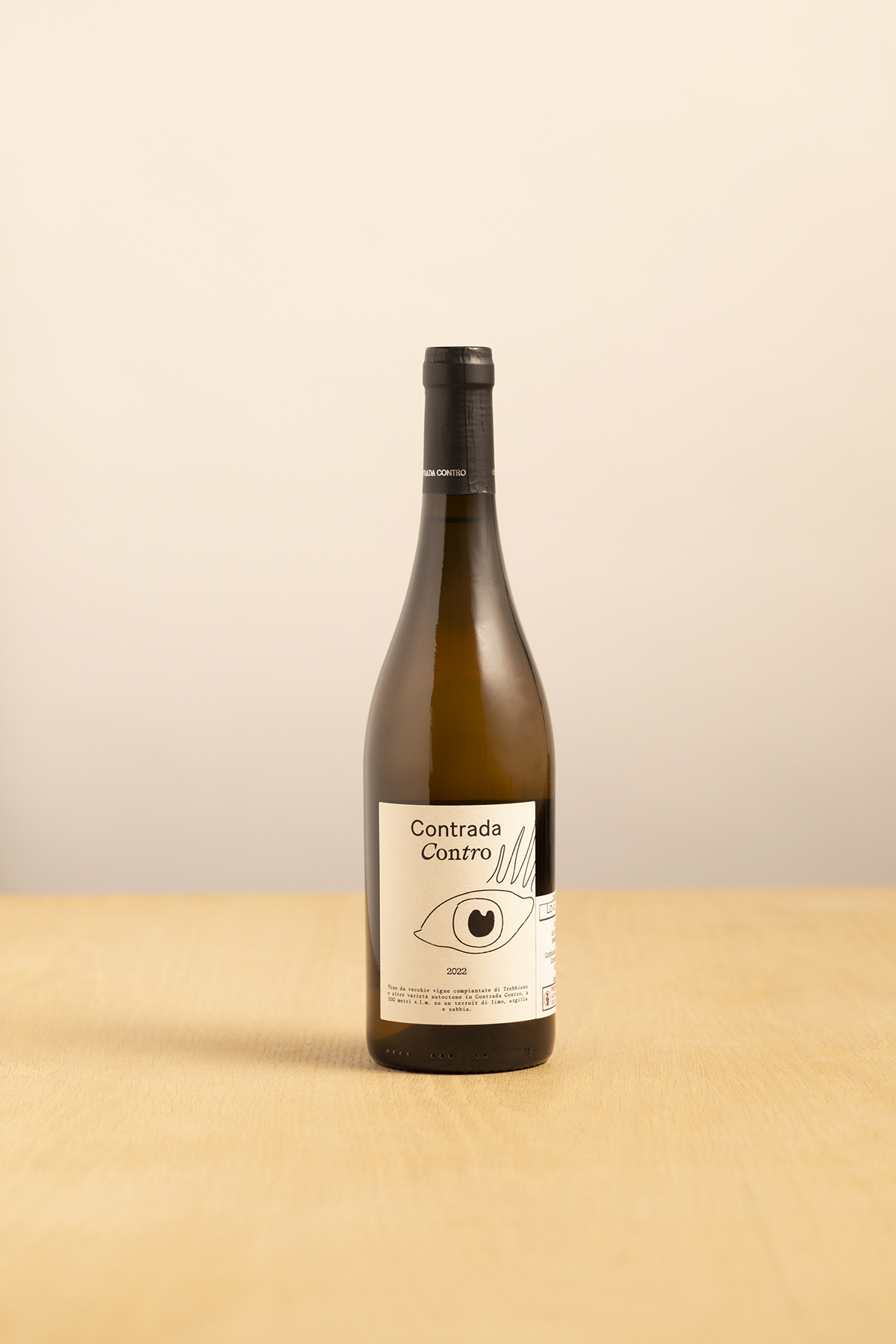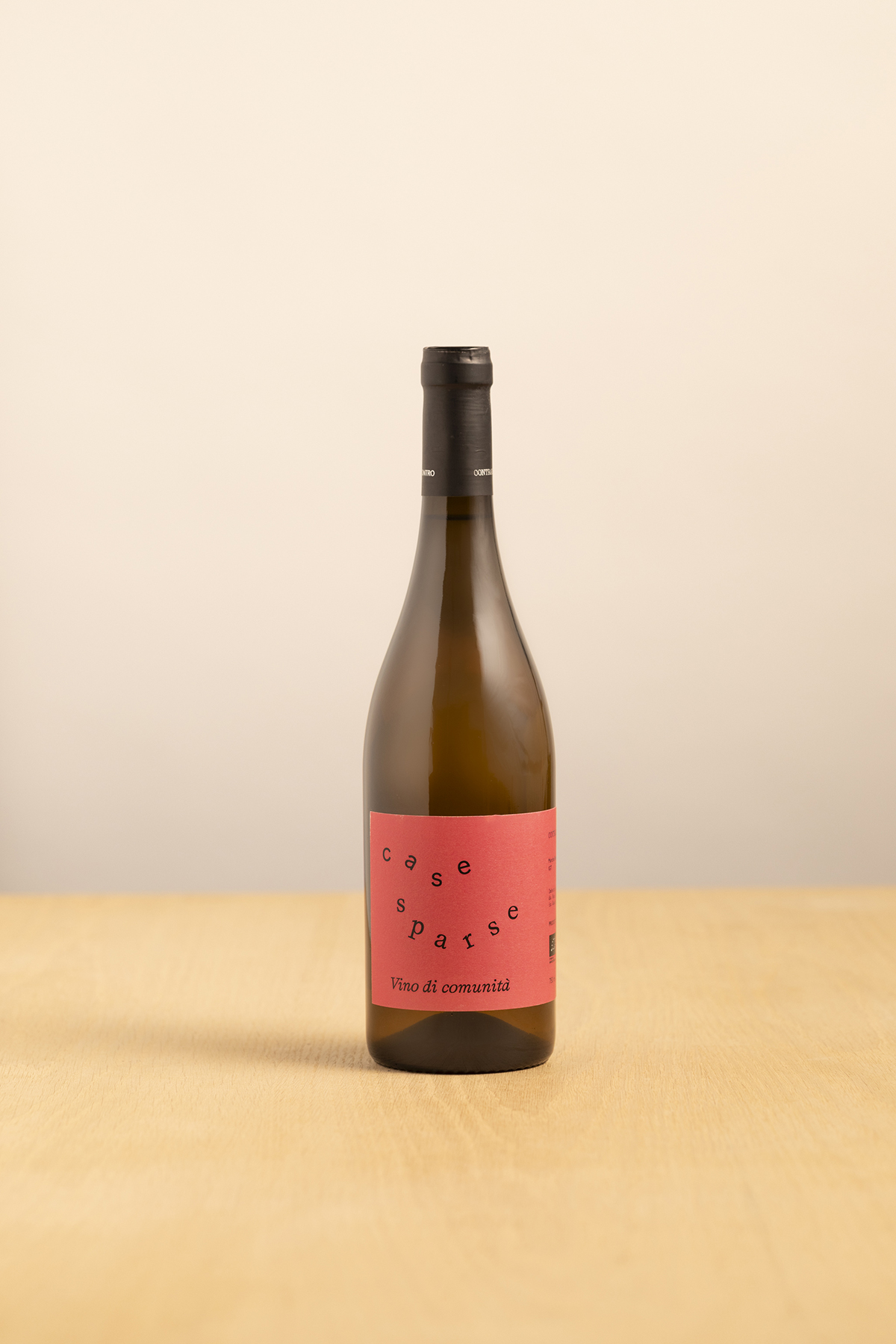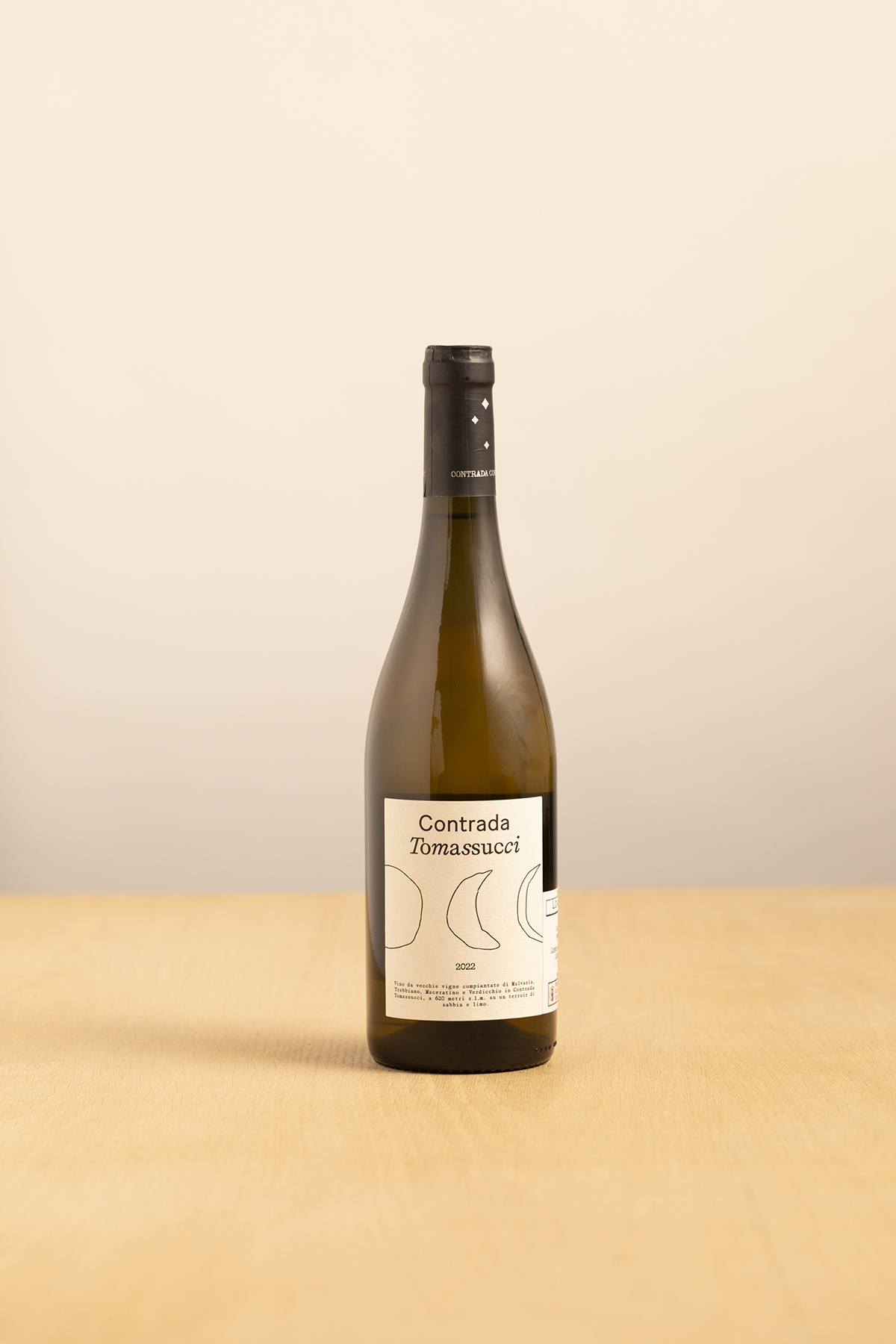Contrada Contro


Contrada Contro is the remarkable and singular project of Andrea Polidoro, a winemaker trained in the fine wine world of Bordeaux and Brunello di Montalcino, who has returned to the forgotten countryside of his ancestors in Le Marche’s Monti Sibillini, formerly a wine powerhouse in the 1700s and 1800s that now has virtually no vineyards left. The story of these wines is the story of Italy’s industrial and agricultural history and they serve both as a taste of the past, and a benchmark fine white wine from the mountainous centre of Italy.
At Andrea Polidoro’s day job, as head winemaker at Montalcino’s esteemed Cupano estate, he finds himself in the beating heart of Italy’s fine wine trade, the world of Brunello. But this world is a million miles, or a 2.5 hour drive, from his passion project, Contrada Contro, in the remote Sibillini mountains of Le Marche. This is the land of Andrea’s grandfather Sante, in the centre of the country, clinging to the eastern side of the great Apennine mountain chain that divides the peninsula. It’s now a quiet and quaint region mostly absent of vineyards, but it was once the agricultural heartland of Italy, and through his conversations with elderly friends and relatives Andrea learned it was a powerhouse of pre-industrial wine production, though the farming looked a lot different before the invention of the tractor. After research in the Sarnano municipal records he discovered a document from 1835 that attests to the presence of a massive 3,140 hectares of vineyards, mostly of Malvasia Bianca di Candia, but also Trebbiano, Santa Maria and Maceratina. The remarkable reason that these vineyards were almost all ripped out by the late 1960s is down to the farming: Rather than planting in rows that could be mechanised and worked, historically these vineyards were planted ‘married’ to the arburi; meaning they were trained up maple trees in large sparse formations called ‘Vigna Maritata’.
Once word got around the bars of Sarnano that there was a young winemaker in town interested in the historic vineyards, a number of elderly residents who’d been maintaining small parcels of old vines for home production got in touch. Remarkably, in one parcel on a hill just outside neighbouring Gualdo, was a field with two dozen or so large maples entwined with 150+ year old Malvasia Bianca di Candia vines. The field had been untouched for 30 years and the maples, spaced 16 metres apart, were overgrown and touching each other, though the massive vines under their canopy were alive and healthy. It was this discovery in 2019 that began the project, and Andrea began to collect other vineyards or ‘contrada’ in the area to manage, most notably the Contrada Contro, a 1976 vineyard at 530m that gives the domaine its name, and Contrada Tomassucci, the oldest row-planted vineyard in the area from 1972 at 620m which was once also maples but was replanted from cuttings when the area industrialised. He also made agreements to assist and vinify many micro-parcels in the backyards and farms of the elderly residents under a cuvee he called Case Sparse, or ‘scattered houses’.
Andrea is a determined and very serious winemaker who seeks nothing other than perfection from his work, and any short converstion with him reveals his ambitions for the project; he intends to make world class white wines that can sit on the table with the greats to the south of here in Abruzzo and a counterpart to his Brunello. Upon tasting we can see the potential, like those Trebbiani to the south, these vertical and structured whites beautifully reveal themselves after a few years in bottle as we tasted in his early 2020 iterations. As they begin to gather momentum internationally, particularly at recent vertical tastings at Chambers Street in NY and in London, these wines are a very exciting prospect for those like us who believe fine, age-worthy central Italian Whites are soon to have their moment in the sun.



